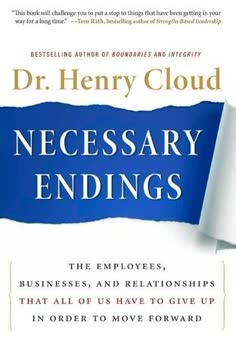つの重要なポイント
1. 境界線はあなたと他人の境界を定義する
境界線は私たちを定義する。それは私と他人の違いを明確にする。境界線は私がどこで終わり、他人がどこで始まるかを示し、所有感をもたらす。
個人的な所有権のライン。 境界線は、あなたの物理的、感情的、精神的な財産を他人から分ける見えないフェンスのようなものだ。それはあなたが何に責任を持ち、何に責任を持たないかを理解するのに役立つ。この明確さは、健全な人間関係と個人の幸福を維持するために重要である。
境界線の種類:
- 物理的(あなたの体、個人的な空間)
- 感情的(感情、反応)
- 精神的(思考、意見)
- 精神的(信念、価値観)
これらの境界線を認識することで、他人と交流しながら自分のアイデンティティを維持することができる。他人の責任を引き受けたり、個人的な空間を侵害されたりするのを防ぐことができる。
2. 健全な境界線は個人の成長と人間関係に不可欠である
境界線を持つことは、自分の転移に責任を持つことを意味する。誰かに対して強い反応を示す場合、少し時間を取って内面を見つめ、その感情が馴染みのあるものであるかどうかを確認する。
成長の基盤。 境界線は個人の発展に必要な構造を提供する。それは選択を行い、失敗から学び、自己認識を発展させることを可能にする。境界線がなければ、他人の生活に巻き込まれ、自分のアイデンティティを失ったり、他人の要求に圧倒されたりするリスクがある。
関係の強化。 一般的な誤解とは異なり、境界線は人々を遠ざけるのではなく、実際にはより親密で真実の関係を促進する。それは以下の方法で役立つ:
- 期待の明確化
- 相互尊重の促進
- 恨みや対立の減少
- 個人の責任の奨励
健全な境界線は、必要なときに「ノー」と言うことを可能にし、あなたにとって本当に重要なことに時間とエネルギーを保護する。
3. 境界線を設定することは、自分の人生に責任を持つことを意味する
他人を変えることはできない。変えられるのは自分だけだ。
選択の所有権。 境界線を設定することは、自分の人生をコントロールしていることを認識することを意味する。これは、自分の思考、感情、行動に責任を持ち、他人や状況を責めるのではなく、自分の状況を受け入れることを含む。
責任を持つための重要な側面:
- 選択する力を認識する
- 選択の結果を受け入れる
- 他人の責任を引き受けない
- 他人の欠点に焦点を当てるのではなく、自分の問題に対処する
責任を持つことで、被害者の心構えから脱却し、積極的に自分の人生や人間関係を形作ることができる。
4. 境界線は家族、仕事、自分自身などのさまざまな側面に適用される
私たちは、感情、衝動、欲望を持ちながらも、それを行動に移さないための内面的な空間を持つ必要がある。
家族の境界線。 成人期に移行する際、家族との健全な境界線を確立することは重要である。これには以下が含まれる:
- 親子関係の再交渉
- 侵入的または支配的な行動に対する制限の設定
- 家族システム内での自分のアイデンティティの維持
仕事の境界線。 職場では、境界線は仕事と生活のバランスや職業上の関係を維持するのに役立つ。例としては:
- 明確な勤務時間の設定とそれを守ること
- 職務の責任の定義
- 過剰な要求に対して「ノー」と言うこと
自己の境界線。 内面的な境界線は、自分の行動や感情を調整することを含む。これには以下が含まれる:
- 衝動や欲望の管理
- 個人的な目標と制限の設定
- 自己規律と自己ケアの実践
5. 他人の境界線を尊重することは、自分の境界線を設定することと同じくらい重要である
神は多くの方法で私たちの境界線を尊重している。まず、私たちだけができる仕事を残してくれる。そして、私たちが変わるために、私たちの行動の痛みを伴う結果を経験させてくれる。
相互尊重。 他人の境界線を認識し、尊重することは、健全な人間関係を維持するために重要である。これには以下が含まれる:
- 個人的なラインを越える前に許可を求める
- 「ノー」を答えとして受け入れる
- 操作や強制を避ける
結果から学ぶ。 他人が自分の行動の自然な結果を経験することを許すことは、一種の尊重である。それは彼らが学び、成長することを可能にし、選択の結果から守られることを防ぐ。
境界線を尊重することは、他人の感情や行動に責任を持たないことを理解することでもある。これにより、不必要な罪悪感から解放され、他人が自分の人生に責任を持つことができる。
6. 境界線は精神的および感情的な健康に根ざしている
境界線は私たちの財産を区別するのに役立ち、それを世話することができるようにする。それは私たちが「心をすべての注意を払って守る」ことを助ける。
精神的な基盤。 境界線は精神的な原則に深く根ざしている。それは神の性質と人間の自由意志に対する尊重を反映している。この精神的な基盤を理解することで、境界線を設定し維持する際の強さと明確さを提供する。
感情的な成熟。 健全な境界線は感情的な知性と成熟を必要とする。これには以下が含まれる:
- 自分の感情を理解し管理する
- 他人の感情に共感しながらも、それを引き受けない
- 自分のニーズと欲求を他人のものと区別する
感情的および精神的な健康の発展は、健全な境界線の設定を支え、またそれによって支えられる継続的なプロセスである。
7. 抵抗を克服することは境界線を確立する上で重要である
抵抗に直面することは、あなたが必要なことをしている良い兆候である。
外部の抵抗。 境界線を設定し始めると、古いパターンに慣れている他人からの反発に直面するかもしれない。これには以下が含まれる:
- 怒りや恨み
- 罪悪感を感じさせる行為
- 操作の試み
内部の抵抗。 自分自身の恐怖や根深いパターンも変化に抵抗することがある。一般的な内部の障壁には以下が含まれる:
- 拒絶や見捨てられることへの恐れ
- 自分を主張することへの罪悪感
- 対立に対する不快感
これらの抵抗がプロセスの自然な一部であることを認識することで、健全な境界線を確立するために粘り強く取り組むことができる。サポートを求め、成長に対するコミットメントを維持することが重要である。
8. 許しと境界線は連携して機能する
許しは非常に難しい。それは誰かが「あなたに借りている」ものを手放すことを意味する。許しは過去からの自由であり、あなたを傷つけた虐待者からの自由である。
許しと和解の違い。 許しが有害な行動を続けさせることを意味しないことを理解することが重要である。誰かを許すことは、和解や境界線の撤廃を意味しない。許しは内面的な手放しのプロセスであり、境界線は将来の害からあなたを守る。
許しによる自由。 許しは以下からの自由をもたらす:
- 過去の傷に対する感情的な束縛
- 復讐や報復の必要性
- 他の関係を毒する苦味
許しと健全な境界線を組み合わせることで、過去の傷から癒され、将来の害から自分を守ることができる。
9. 成功した境界線の設定は段階的なプロセスである
境界線は筋肉のようなものである。それは安全なサポートシステムの中で鍛えられ、成長することができる。
段階的なアプローチ。 健全な境界線を確立することは一夜にして達成されるものではない。それは以下を必要とする:
- 自己認識と反省
- 安全な環境での練習
- より挑戦的な状況での段階的な実施
継続的な学習。 成長し、状況が変わるにつれて、境界線は調整が必要になるかもしれない。以下のことに備える:
- 定期的に境界線を再評価する
- 挫折や成功から学ぶ
- 必要に応じてサポートや指導を求める
進歩が目標であり、完璧ではないことを覚えておくことが重要である。境界線の設定と維持における小さな一歩一歩が、全体的な成長と幸福に貢献する。
最終更新日:
FAQ
What's Boundaries: When to Say Yes, How to Say No to Take Control of Your Life about?
- Understanding Boundaries: The book delves into the concept of boundaries, defining them as mental, physical, emotional, and spiritual lines that help distinguish personal responsibilities.
- Personal Responsibility: It emphasizes the importance of taking ownership of one's life and decisions, highlighting how many emotional and relational issues arise from a lack of boundaries.
- Biblical Perspective: The authors present a biblical view, aligning boundaries with God's principles for a fulfilling life, and guide readers on setting and maintaining them in various relationships.
Why should I read Boundaries: When to Say Yes, How to Say No to Take Control of Your Life?
- Improve Relationships: The book provides tools to enhance relationships by teaching effective communication of needs and establishing healthier dynamics.
- Personal Growth: It encourages identifying areas lacking boundaries, offering practical advice to take control of life and make value-aligned choices.
- Biblical Insights: For those seeking a faith-based approach, it integrates biblical teachings, showing how boundaries lead to a more abundant life in accordance with God's will.
What are the key takeaways of Boundaries: When to Say Yes, How to Say No to Take Control of Your Life?
- Ten Laws of Boundaries: The authors outline laws like the Law of Sowing and Reaping, providing a framework for understanding boundary functions.
- Types of Boundary Problems: The book categorizes issues such as compliant, avoidant, and controlling behaviors, helping readers identify and address their own boundary issues.
- Practical Strategies: It offers strategies for setting and maintaining boundaries in relationships, emphasizing clear communication and self-awareness.
What are the best quotes from Boundaries: When to Say Yes, How to Say No to Take Control of Your Life and what do they mean?
- “You can’t change others; you can only change yourself.”: Highlights personal responsibility, focusing on one's actions rather than controlling others.
- “Boundaries help us to distinguish our property so that we can take care of it.”: Illustrates boundaries' role in protecting emotional and spiritual well-being.
- “A lack of boundaries is often a sign of disobedience.”: Points to spiritual implications, suggesting that failing to set limits can lead to unhealthy relationships.
What are the ten laws of boundaries mentioned in Boundaries: When to Say Yes, How to Say No to Take Control of Your Life?
- Law of Sowing and Reaping: Actions have consequences, and allowing others to experience these results encourages personal responsibility.
- Law of Responsibility: Emphasizes personal accountability for one's feelings and actions, clarifying roles in relationships.
- Law of Power: Teaches control over one's actions and responses, focusing on self-behavior rather than changing others.
How do I develop healthy boundaries according to Boundaries: When to Say Yes, How to Say No to Take Control of Your Life?
- Identify Your Needs: Recognize your own needs and desires, crucial for effective boundary communication.
- Practice Saying No: Build confidence by practicing saying no in low-stakes situations, becoming comfortable with asserting boundaries.
- Communicate Clearly: Clearly communicate identified boundaries to others, with honest communication being key to healthy relationships.
What are the common boundary myths discussed in Boundaries: When to Say Yes, How to Say No to Take Control of Your Life?
- “If I set boundaries, I’m being selfish.”: The myth suggests selfishness, but boundaries are necessary for healthy relationships and greater care for others.
- “Boundaries are a sign of disobedience.”: Implies rebellion, but boundaries reflect personal responsibility and growth, aligning with God's design.
- “If I set boundaries, I will hurt others.”: Creates fear of conflict, but healthy boundaries foster respect and understanding despite initial negative reactions.
How do I apply the concepts from Boundaries: When to Say Yes, How to Say No to Take Control of Your Life in my life?
- Identify Your Limits: Reflect on areas where you feel overwhelmed, noting specific situations needing boundaries.
- Communicate Clearly: Use assertive communication with "I" statements to express feelings and needs without blame.
- Enforce Consequences: Be prepared to enforce consequences for boundary violations, possibly distancing from toxic relationships.
How can I set boundaries with my children as described in Boundaries: When to Say Yes, How to Say No to Take Control of Your Life?
- Teach Responsibility: Allow children to experience natural consequences, fostering accountability and decision-making skills.
- Use Clear Communication: Clearly communicate expectations and consequences, ensuring children understand rules and reasons.
- Model Boundaries: Demonstrate healthy boundary-setting, as children learn by example, helping them develop their own skills.
How do boundaries relate to my relationship with God as discussed in Boundaries: When to Say Yes, How to Say No to Take Control of Your Life?
- Understanding God’s Nature: Boundaries reflect God's character, helping us understand their importance in our lives.
- Personal Responsibility: Establishing boundaries prioritizes spiritual growth and relationship with God, seeking His guidance.
- Freedom in Christ: Healthy boundaries lead to greater freedom, focusing on spiritual journey without unhealthy attachments.
How do I deal with resistance when setting boundaries, as discussed in Boundaries: When to Say Yes, How to Say No to Take Control of Your Life?
- Expect Anger: Anticipate anger from others, as they may need time to adjust to losing control over you.
- Stay Firm: Stand your ground, resisting guilt or pressure, knowing boundary-setting is healthy and necessary.
- Seek Support: Lean on a support system for encouragement, helping you stay committed to boundary-setting efforts.
How can I measure my success in setting boundaries according to Boundaries: When to Say Yes, How to Say No to Take Control of Your Life?
- Notice Changes in Relationships: Observe if people respect your limits more and if you feel less resentful.
- Reflect on Your Feelings: Assess if you feel more empowered and in control, with decreased anxiety and increased self-esteem.
- Evaluate Your Actions: Ensure consistent enforcement of boundaries and follow-through with consequences, maintaining limits over time.
レビュー
本書『Boundaries Updated and Expanded Edition』は、主に肯定的な評価を受けており、読者は健全な境界を設定するための人生を変える洞察を称賛している。多くの人々が人間関係や自己ケアの改善に役立つと感じている。キリスト教徒の読者は聖書の視点を評価しているが、非キリスト教徒は宗教的な内容が気になることもある。批評家は、本書が繰り返しが多く、時代遅れであると指摘している。全体として、読者は「ノー」と言うことや自分の人生をコントロールするための実践的なアドバイスを重視しているが、特定の解釈に同意しない人や例が現実的でないと感じる人もいる。
Similar Books






















